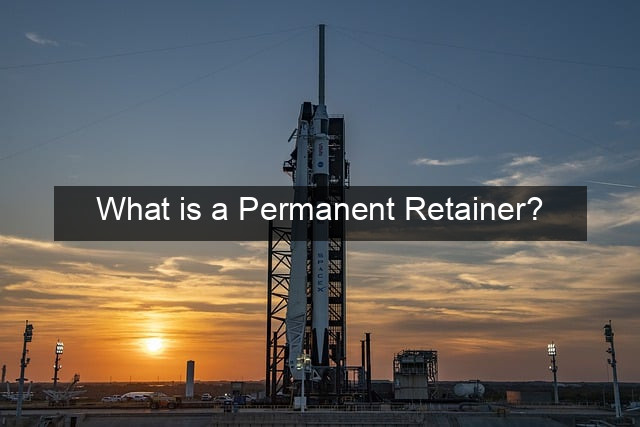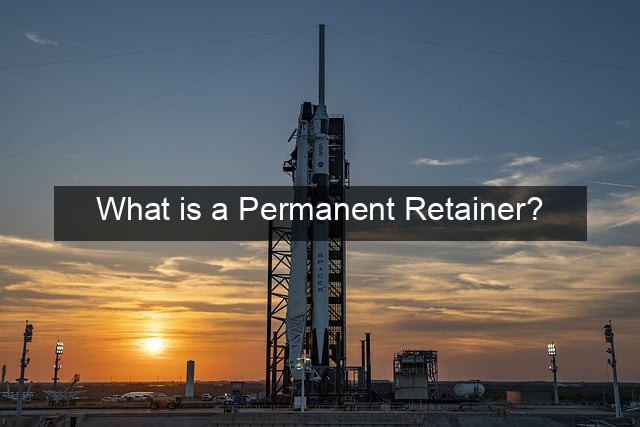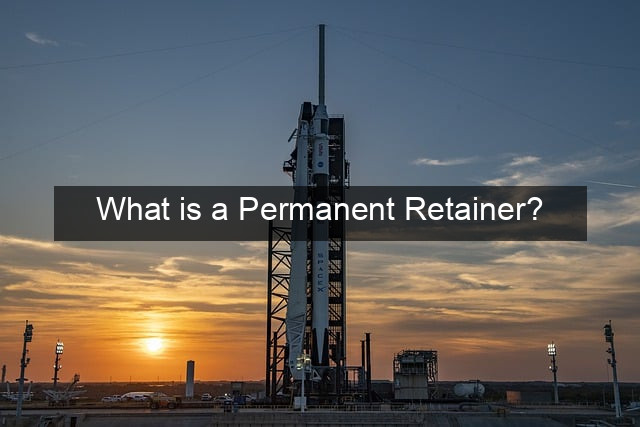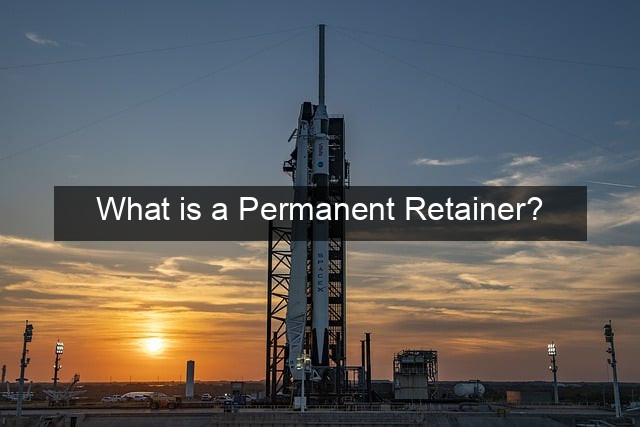What is a Permanent Retainer?

- What is a Permanent Retainer?
- What is a Permanent Retainer?
- Types of Permanent Retainers
- Fixed Wire Retainers
- Bonded Retainers
- The Procedure for Getting a Permanent Retainer
- Consultation and Assessment
- Placement and Bonding
- Post-Placement Care
- Living with a Permanent Retainer
- Oral Hygiene and Maintenance
- Potential Complications and Solutions
- Long-Term Considerations
- Conclusion
- Frequently Asked Questions

What is a Permanent Retainer?
A straight, confident smile is often the desired outcome of orthodontic treatment. But achieving that perfect alignment isn’t the finish line. Maintaining it is. This is where permanent retainers step in. These discreet devices, bonded behind your teeth, work tirelessly to prevent your teeth from shifting back to their original positions after braces or aligners come off. Think of them as the unsung heroes of orthodontics, quietly preserving your hard-earned, beautiful smile. While the idea of a “permanent” device might sound daunting, understanding their purpose, benefits, and potential drawbacks can help you make an informed decision about whether a permanent retainer is the right choice for you.
This comprehensive guide will delve into the world of permanent retainers, exploring everything from their different types and the procedure for placement to their long-term care and potential complications. We’ll address common concerns and provide you with the knowledge you need to discuss this option confidently with your orthodontist.
Types of Permanent Retainers
Fixed Wire Retainers
The most common type of permanent retainer is the fixed wire retainer. A thin, solid wire is custom-fit to the back of your teeth, typically from canine to canine on either the upper or lower arch, or both. This wire is bonded to the teeth using a special dental adhesive, creating a secure hold that prevents movement. Fixed wire retainers are known for their durability and effectiveness in maintaining alignment.
These retainers are incredibly discreet, barely visible when you smile or talk. They are also comfortable for most patients after an initial adjustment period. While they require specific cleaning techniques, their constant presence ensures consistent retention, minimizing the risk of relapse.
The material used for fixed wire retainers is typically stainless steel, known for its strength and resistance to corrosion. This ensures the retainer can withstand the forces of everyday chewing and biting.
Bonded Retainers
Bonded retainers are another term often used interchangeably with fixed wire retainers. They refer to the same type of retainer where a wire is bonded directly to the back of the teeth. The term “bonded” emphasizes the method of attachment, highlighting the secure and long-lasting nature of the bond.
These retainers are favored for their low profile and ease of maintenance. Once in place, they require minimal attention beyond regular brushing and flossing with specific techniques.
Bonded retainers are highly effective in preventing relapse, especially in cases where there’s a high risk of teeth shifting back to their pre-treatment positions.
The Procedure for Getting a Permanent Retainer
Consultation and Assessment
The journey to a permanent retainer begins with a consultation with your orthodontist. During this appointment, your orthodontist will assess your teeth, bite, and overall oral health. They will discuss your treatment goals and determine if a permanent retainer is suitable for your specific needs.
This is an excellent opportunity to ask questions and address any concerns you may have about the procedure. Your orthodontist will explain the benefits and potential drawbacks of permanent retainers, allowing you to make an informed decision.
The assessment may involve taking impressions or digital scans of your teeth to create a customized retainer that fits perfectly.
Placement and Bonding
The placement of a permanent retainer is a relatively quick and painless procedure. After thoroughly cleaning and drying the teeth, the orthodontist applies a special dental adhesive to the back surface of the teeth where the retainer will be placed. The custom-fit wire is then carefully positioned and bonded to the teeth.
A special light is used to cure the adhesive, creating a strong bond between the wire and the teeth. The entire process typically takes just a few minutes per arch.
You might experience some minor discomfort or pressure immediately after the placement, but this usually subsides quickly.
Post-Placement Care
After getting a permanent retainer, your orthodontist will provide detailed instructions on how to care for it. Proper oral hygiene is crucial to prevent plaque buildup and maintain gum health around the retainer.
You’ll learn specific techniques for brushing and flossing around the wire. Regular dental checkups are also essential to monitor the retainer’s integrity and address any potential issues.
Your orthodontist may recommend avoiding certain foods that could damage the retainer, such as sticky candies or hard, crunchy snacks.
Living with a Permanent Retainer
Oral Hygiene and Maintenance
Maintaining good oral hygiene with a permanent retainer requires a slightly different approach than traditional brushing and flossing. You’ll need to use specific techniques to clean around the wire and prevent plaque buildup. Interdental brushes, floss threaders, and water flossers can be helpful tools for reaching those hard-to-clean areas.
Regular dental checkups are essential for professional cleaning and monitoring the retainer’s condition. Your orthodontist can identify and address any potential issues early on, ensuring the longevity of your retainer and the health of your teeth and gums.
Paying close attention to your oral hygiene routine with a permanent retainer will help prevent gum inflammation, cavities, and other dental problems.

Potential Complications and Solutions
While permanent retainers are generally safe and effective, some potential complications can arise. These may include breakage of the wire, loosening of the bond, or plaque buildup around the retainer. Regular dental checkups are crucial for early detection and prompt treatment of these issues.

If the wire breaks or the bond loosens, it’s important to contact your orthodontist immediately to schedule a repair appointment. Ignoring these problems can lead to teeth shifting and compromise the results of your orthodontic treatment.
Proper oral hygiene practices can minimize the risk of plaque buildup and gum inflammation around the retainer.
Long-Term Considerations
Permanent retainers are designed to last for many years, even decades, with proper care. However, they may eventually need to be replaced due to wear and tear or other unforeseen circumstances. Regular checkups with your orthodontist will help determine the lifespan of your retainer and the need for replacement.
Long-term wear of a permanent retainer can sometimes contribute to the buildup of calculus (tartar) on the teeth, making professional cleanings even more important.
Despite the need for ongoing maintenance, permanent retainers offer a reliable and convenient way to maintain a straight smile for years to come.

Conclusion
Permanent retainers are invaluable tools in maintaining the results of orthodontic treatment. They offer a discreet and effective way to prevent teeth from shifting back to their original positions. While they require specific cleaning techniques and regular dental checkups, the long-term benefits of a stable, confident smile often outweigh the minor adjustments to your oral hygiene routine. By understanding the types, procedures, and long-term care associated with permanent retainers, you can make an informed decision about whether this option is right for you. Consulting with your orthodontist will provide you with personalized guidance and address any specific concerns you may have. Ultimately, a permanent retainer can be a worthwhile investment in preserving your beautiful, healthy smile for years to come.
Frequently Asked Questions
How long does a permanent retainer last?
With proper care, a permanent retainer can last for many years, even decades. However, factors like oral hygiene and individual habits can influence its lifespan.
Do permanent retainers hurt?
The placement procedure is generally painless. You might experience some initial pressure or discomfort after placement, but this usually subsides quickly.
Can I eat normally with a permanent retainer?
Yes, you can eat normally, but it’s best to avoid very sticky or hard foods that could damage the retainer.
How do I clean my permanent retainer?
Specific brushing and flossing techniques are required to clean around the retainer effectively. Your orthodontist will provide detailed instructions.
What happens if my permanent retainer breaks?
Contact your orthodontist immediately if your retainer breaks or loosens. They will assess the damage and determine the necessary repairs.
Are permanent retainers visible?
Permanent retainers are bonded behind the teeth, making them virtually invisible when you smile or talk.
How much do permanent retainers cost?
The cost of permanent retainers can vary depending on several factors, including the type of retainer and the orthodontist’s fees. It’s best to discuss pricing with your orthodontist during your consultation.
Are there alternatives to permanent retainers?
Yes, removable retainers are an alternative. These are typically worn at night and offer more flexibility, but require consistent wear for optimal results.
| Retainer Type | Pros | Cons |
|---|---|---|
| Permanent | Discreet, Effective, Convenient | Requires specific cleaning, Potential for breakage |


